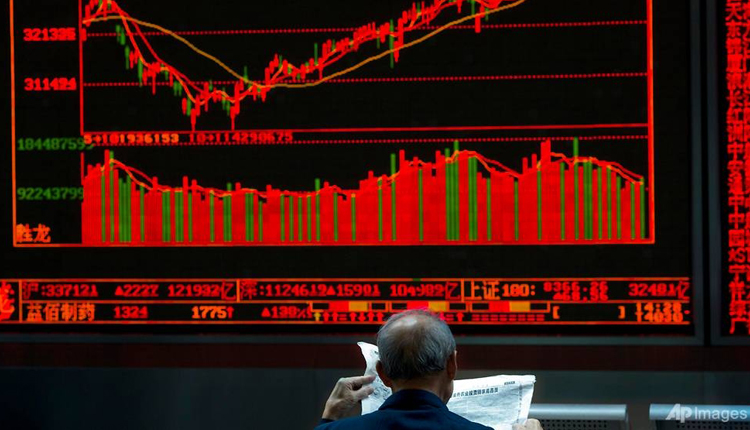Asian markets were mixed on Tuesday after China data showed that manufacturing activity grew less than expected. Meanwhile, trade negotiations between the U.S. and China were set to resume in Beijing.
Greater China markets were higher on the day. The Shanghai composite advanced more than 0.5% to around 3,078.34 and the Shenzhen component added 0.54% to 9,674.53. The Shenzhen composite also rose 0.675% to about 1,636.59.
In Hong Kong, the Hang Seng index declined around 0.6%, as of its final hour of trading.
Manufacturing activity in China fell below expectations in April, data released on Tuesday showed.
The official Purchasing Managers’ Index (PMI) came in at 50.1 for the month of April. Analysts polled by Reuters had expected the indicator to stay at 50.5 — the same as the previous month. A reading above 50 indicates expansion, while a reading below that signals contraction.
Data from a private business survey, the Caixin/Markit factory PMI, fell to 50.2 in April — lower than the March reading of 50.8, and missing the 51 projected by analysts in a Reuters poll.
The Australian dollar — seen as an investment proxy for Chinese economic prospects — tumbled to $0.7039, after touching an earlier high of $0.7069. China is Australia’s largest trading partner, according to the latest data from the Department of Foreign Affairs and Trade in Australia.
One investor is confident that growth will come.
“Where the first quarter growth numbers are concerned, a lot of the economists have actually revised the GDP growth estimates this year up to about … 6.5% from the previous estimates of 6.1 to 6.3%,” Kelvin Tay, regional CIO at UBS Global Wealth Management, told CNBC’s “Street Signs” on Tuesday.
“So there is growth actually coming in, but you need to wait for a couple of months before the cut in the VAT from 16 to 12% kicks in. Before all the other stimulus measures actually can kick in as well,” Tay said, in reference to measures by the Chinese government to prop up the country’s economy.
The latest data came amid a recent slide in mainland Chinese shares, with the Shanghai composite declining more than 5.5% last week.
The Kospi in South Korea slipped 0.58% to close at 2,203.59. Shares of industry heavyweight Samsung Electronics declined 0.65% after the company posted a 60% decline on-year in its first quarter profit. The company’s key rival, chipmaker SK Hynix, also saw its shares drop 1.25%.
Over in Australia, the ASX 200 declined 0.53% to close at 6,325.50 as most of the sectors slipped.
Japan markets are closed for a 10-day holiday from April 27 to May 6 to celebrate the enthronement of the country’s Crown Prince Naruhito.
Meanwhile, the U.S. and China were set to resume trade talks later on Tuesday. U.S. Treasury Secretary Steven Mnuchin said in an interview that negotiations between the two economic powerhouses were in “the final laps,” according to a New York Times report from Sunday.
In overnight market action on Wall Street, the S&P 500 and Nasdaq Composite hit all-time highs, with the moves coming amid the ongoing earnings season.
Through Monday morning stateside, 231 companies in the S&P 500 have reported quarterly results. Of those companies, 77.5% have topped analyst expectations, according to data from FactSet. The reported earnings growth rate, meanwhile, is around 1%, well above the expected 4.2% drop.
Strong corporate reports helped push the S&P 500 and Nasdaq up by 0.9% and 1.9%, respectively, last week.
The U.S. dollar index, which tracks the greenback against a basket of its peers, was at 97.867 after seeing an earlier low of 97.784.
The Japanese yen traded at 111.39 against the dollar after strengthening from levels below 111.9 in the previous session.
Oil prices rose in the afternoon of Asian trading hours, with the international benchmark Brent crude futures contract adding 0.29% to $72.25 per barrel and U.S. crude futures 0.27% higher at $63.67 per barrel.
Source: CNBC


